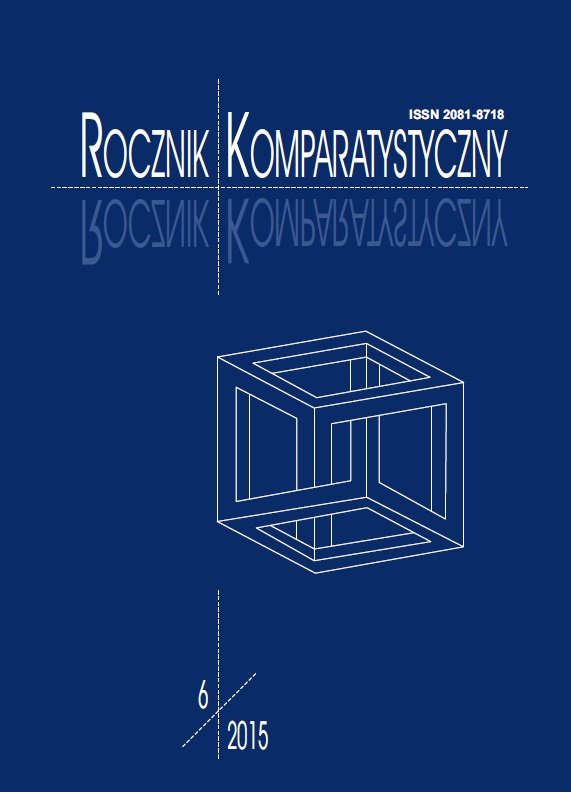Sienkiewicz w Katalonii, czyli jak jedna „mała literatura” staje się słyszalna w drugiej
Sienkiewicz in Catalonia or How One “Small” Literature Becomes Audible in Another One
Author(s): Bożena ZaboklickaSubject(s): Language studies, Language and Literature Studies, Theoretical Linguistics, Studies of Literature, Comparative Linguistics, Philology, Theory of Literature
Published by: Wydawnictwo Naukowe Uniwersytetu Szczecińskiego
Keywords: comparative literature; translation studies; Catalan literature and culture; Henryk Sienkiewicz; Quo vadis?
Summary/Abstract: Since Catalonia is a bilingual region of the Spanish state, when we talk about Sienkiewicz in Catalonia we must refer to editions in both languages, Spanish and Catalan. In 1900 four different translations of Quo vadis? into Spanish and an incomplete one into Catalan appeared, all of them in Barcelona, capital of Catalonia and the most important centre of publishing production in Spain. Up till the end of the Franco era (1975) Sienkiewicz was the most often published Polish author in Spain. Quo vadis? was received with enthusiasm in Catholic circles that considered it an expression of Christian principles, although for many orthodox Catholics the novel, even though correct from the ideological point of view, was totally improper and immoral in the way the author described the outgoing pagan world. That’s why the writer’s works were censored by ecclesiastical bodies. In the 1920s. the Catalan literary language was in a process of creation; it was uncertain, unsettled and extremely malleable and just because of these qualities it was opening up endless possibilities of evolving a new style. Translations played an important role in building the model of modern prose. In the period known as Noucentisme (1906–1923), as well as during the following two decades, the prose in Catalan had been translated from other languages. In this way translations of modern European classics made up for the lack of own tradition. Catalan prose writers were building their own literary language on the models of other literatures that had more solid tradition. In the case of the authors who wrote in less known languages, such as Sienkiewicz, the translations were done not directly but from the dominating languages in the world of culture of that period, mainly French or Italian. In 1922 the Catalan publishing house, Editorial Catalana, published two volumes of Sienkiewicz’s prose: the novel Na marne (In vain) translated by Josep M. Girona and a selection of short stories entitled Bartek the winner and other stories translated by a well-known Catalan humanist, poet and writer, Carles Riba. If other translations, especially of Quo vadis?, served the purpose of transmitting the ideological message, for Carles Riba the prose of Sienkiewicz became a stylistic model. In 1925 another publishing house from Barcelona, Montaner i Simón, the most important not only in Catalonia but also in Spain and Latin America, published the third translation of the novel Ogniem i mieczem (With fire and sword) done directly from Polish by a Czech polyglot, Rudolf Jan Slabý. At that time the director of Montaner i Simón was a well-known Catalan intellectual, writer and politician, Joan Estelrich, one of the celebrities of the Noucentisme, who was deeply involved in the Catalan nationalist movement and in the work of building state structures of Catalonia. He decided to publish Ogniem i mieczem because of the epic scale and the patriotic character of the novel. Although Sienkiewicz in Spanish or Catalan translations has little to do with Sienkiewicz in Polish, he enjoyed enormous popularity and we can safely say that he significantly influenced the way in which the image of Poland has found its place in the collective imagery of the Spaniards and the Catalans. However, we should take into account that a great part of the responsibility for this image can be attributed to the translators who manipulated the original texts and adapted them to the preconceived idea they had about the writer’s work. To sum up, it is beyond dispute that the Polish literature became audible in the widely understood Catalan culture (both in Catalan and in Spanish) thanks to Sienkiewicz, whose works proved to be useful to this culture for different ideological, literary and political purposes.
Journal: Rocznik Komparatystyczny
- Issue Year: 2015
- Issue No: 6
- Page Range: 333-347
- Page Count: 15
- Language: Polish

